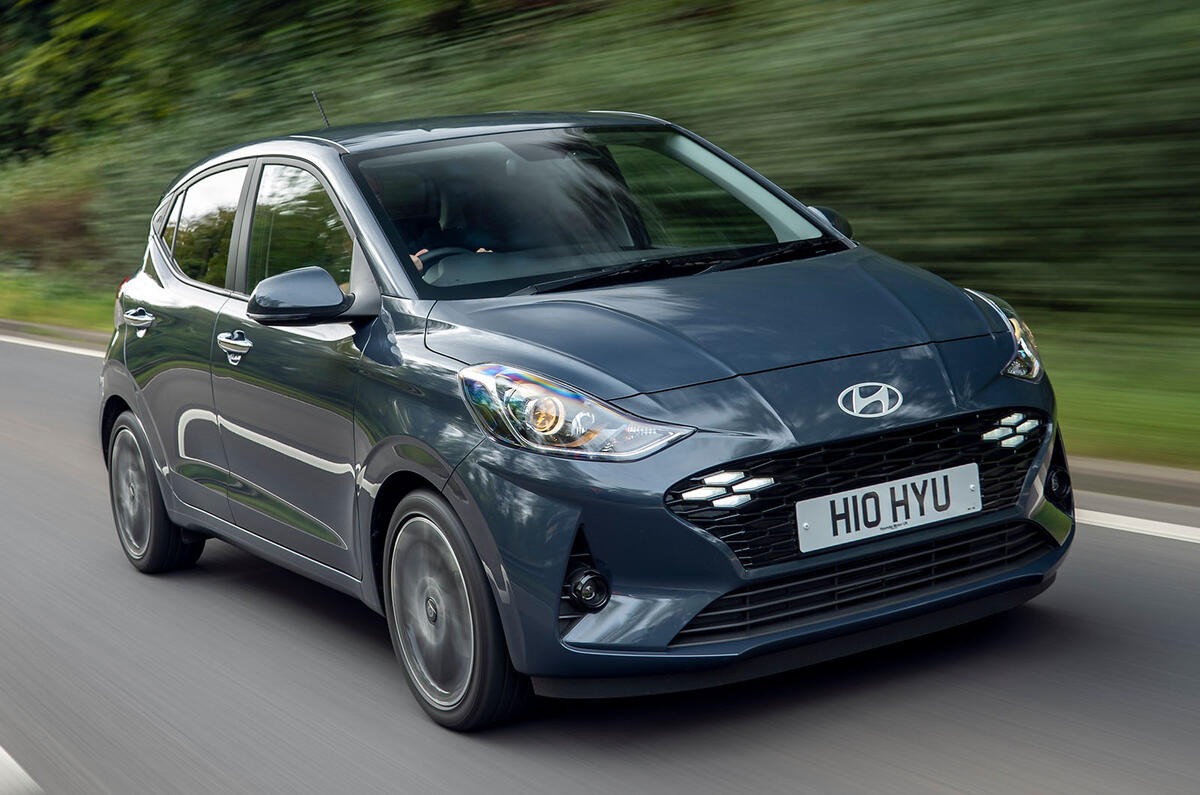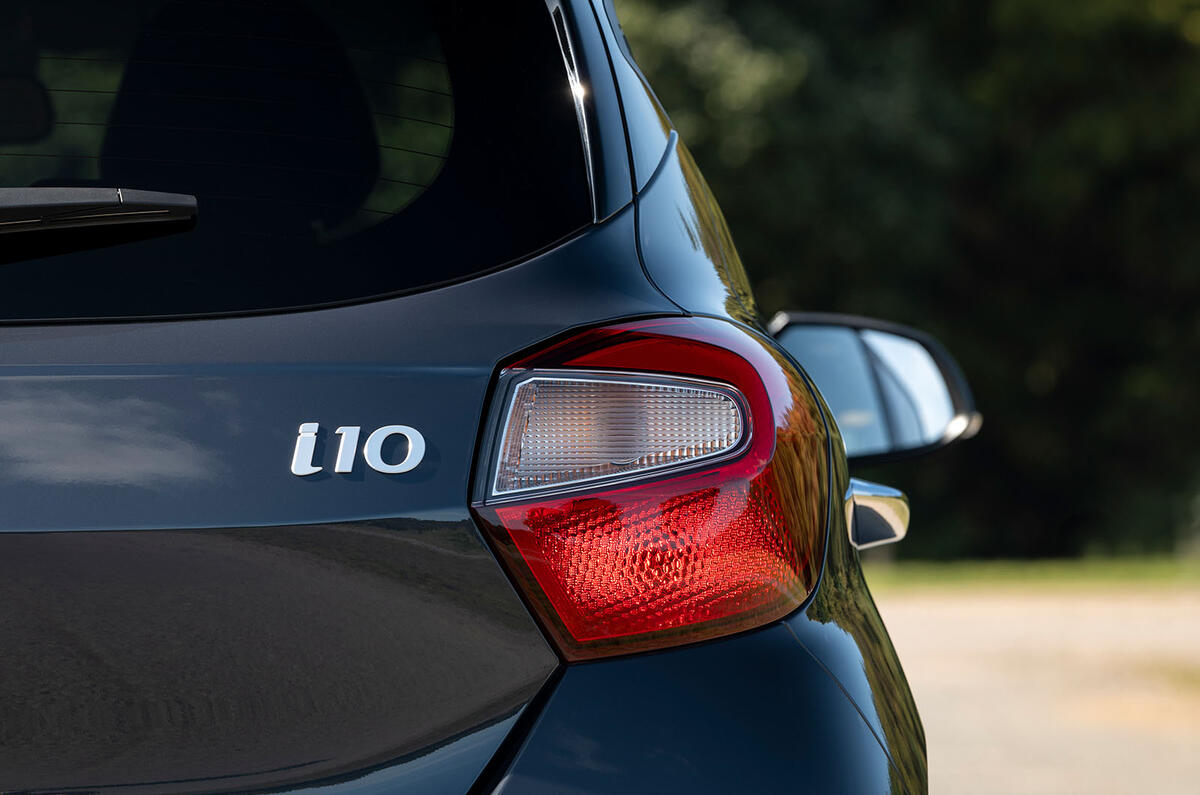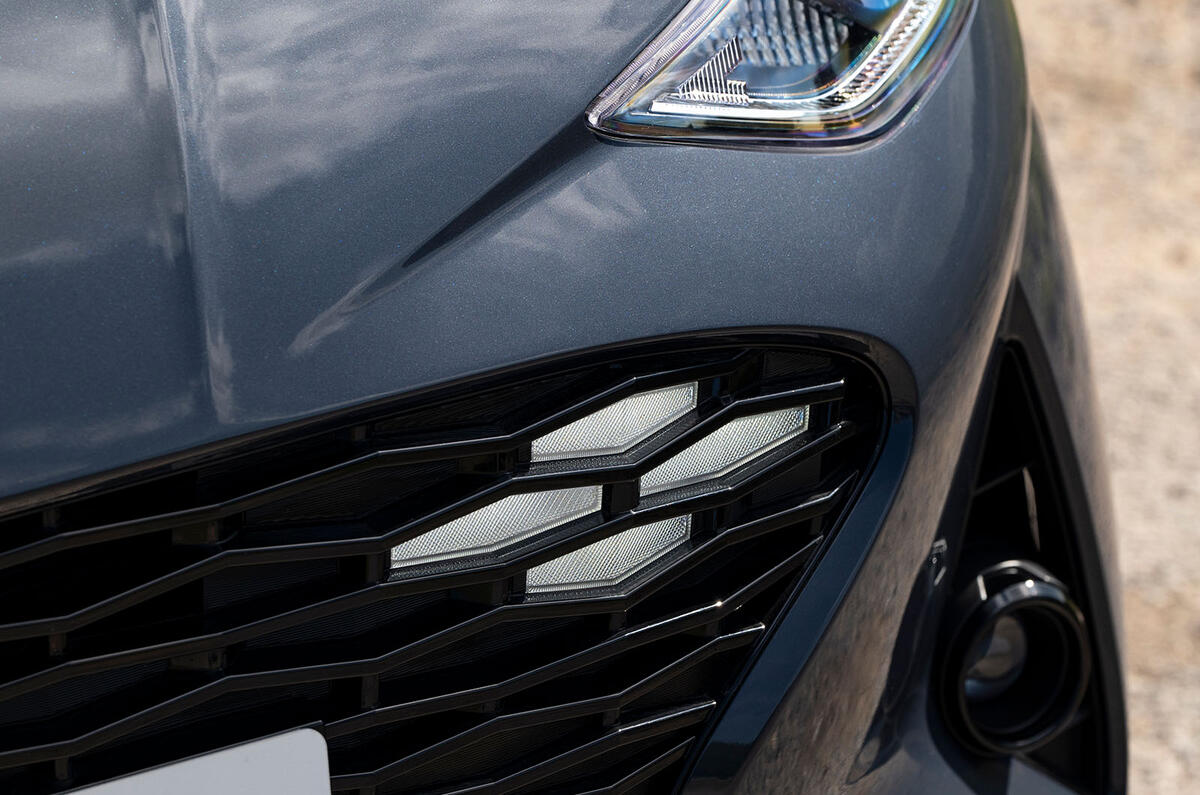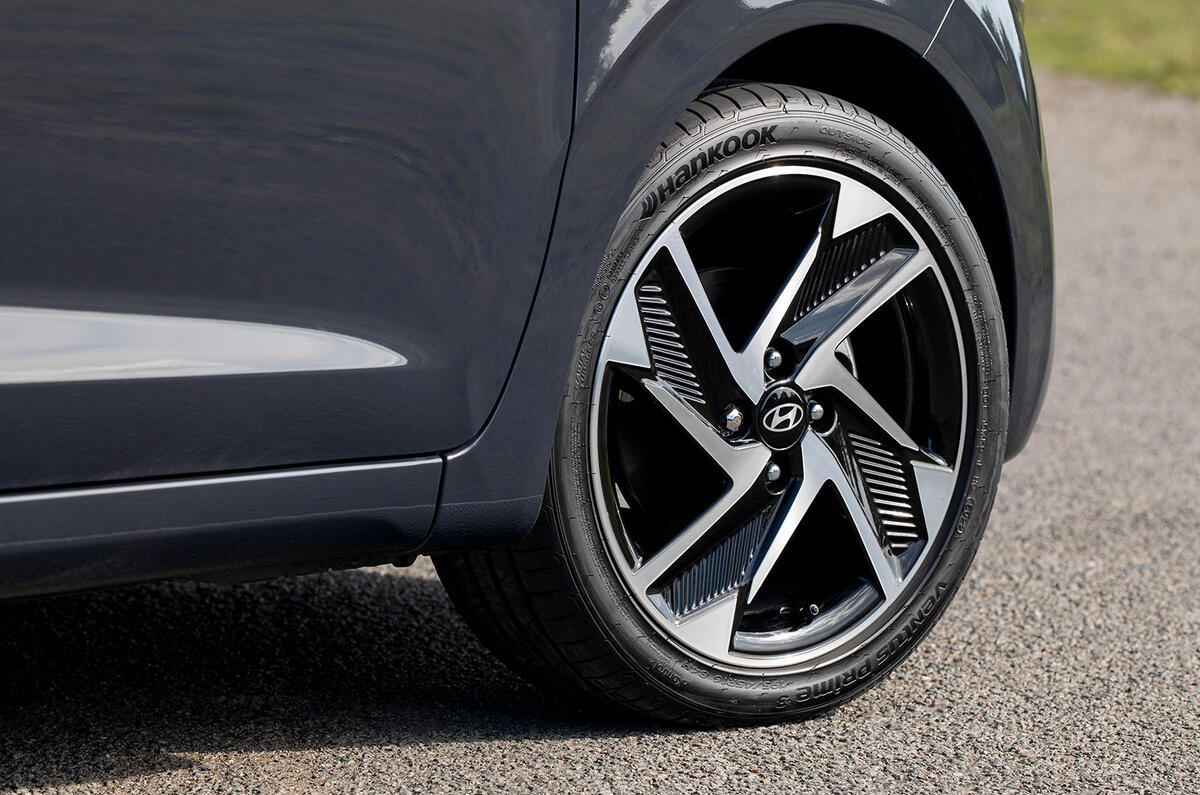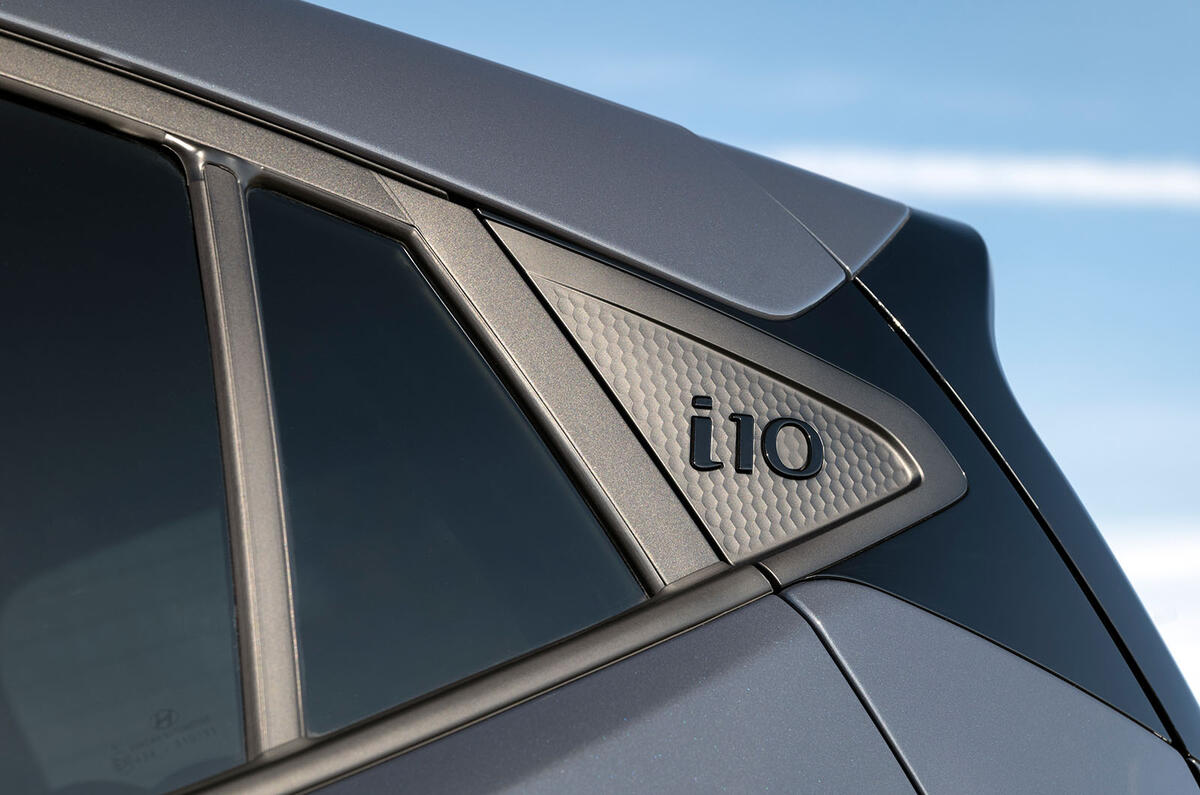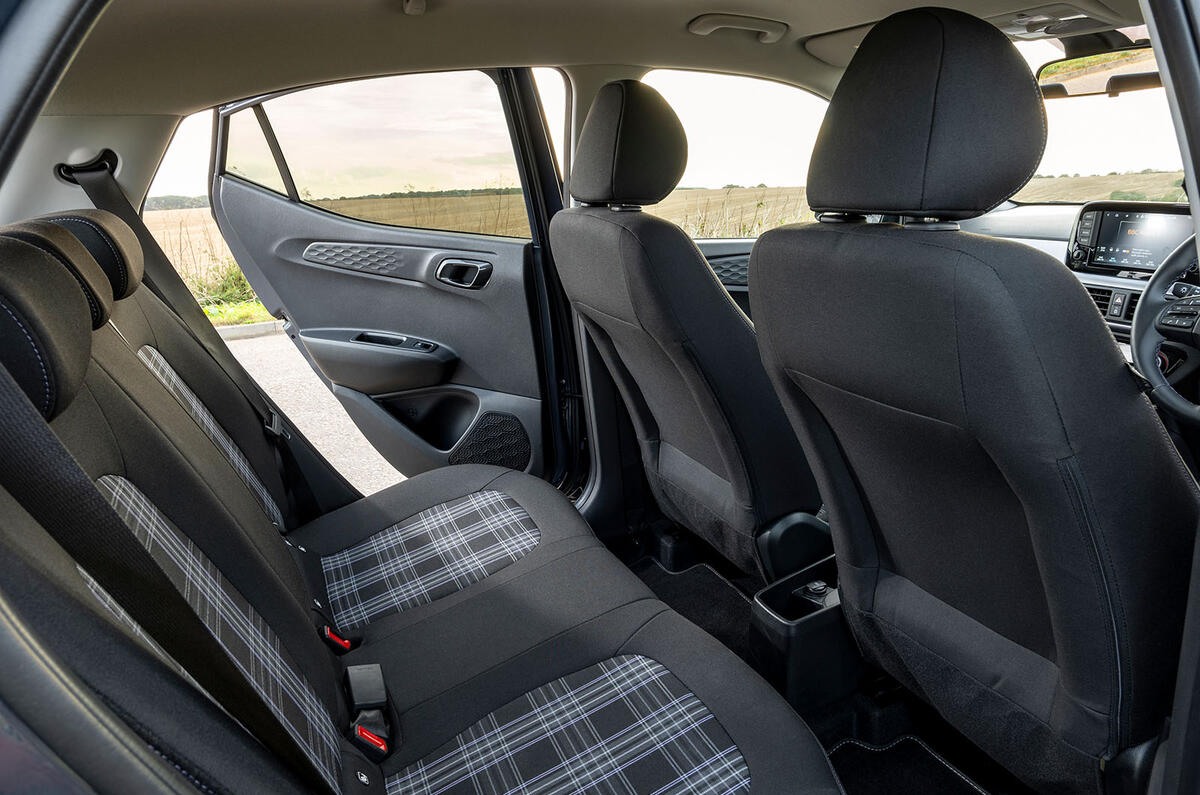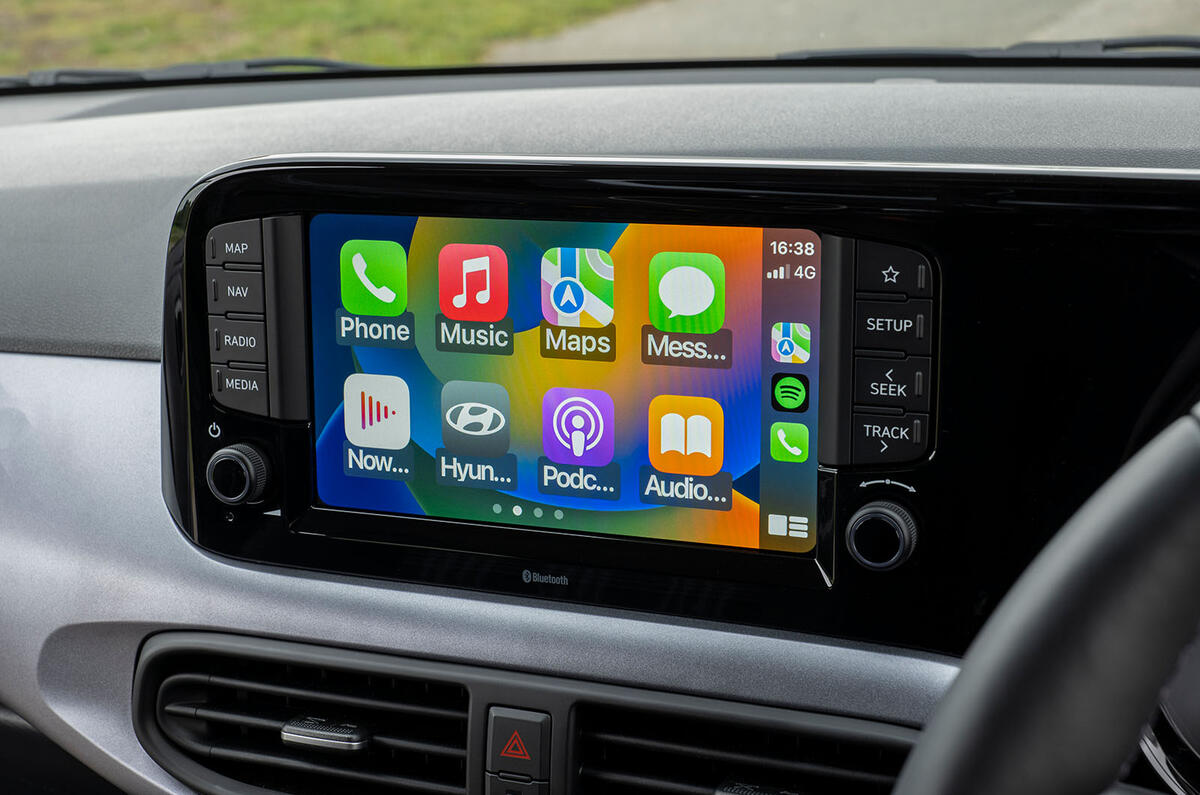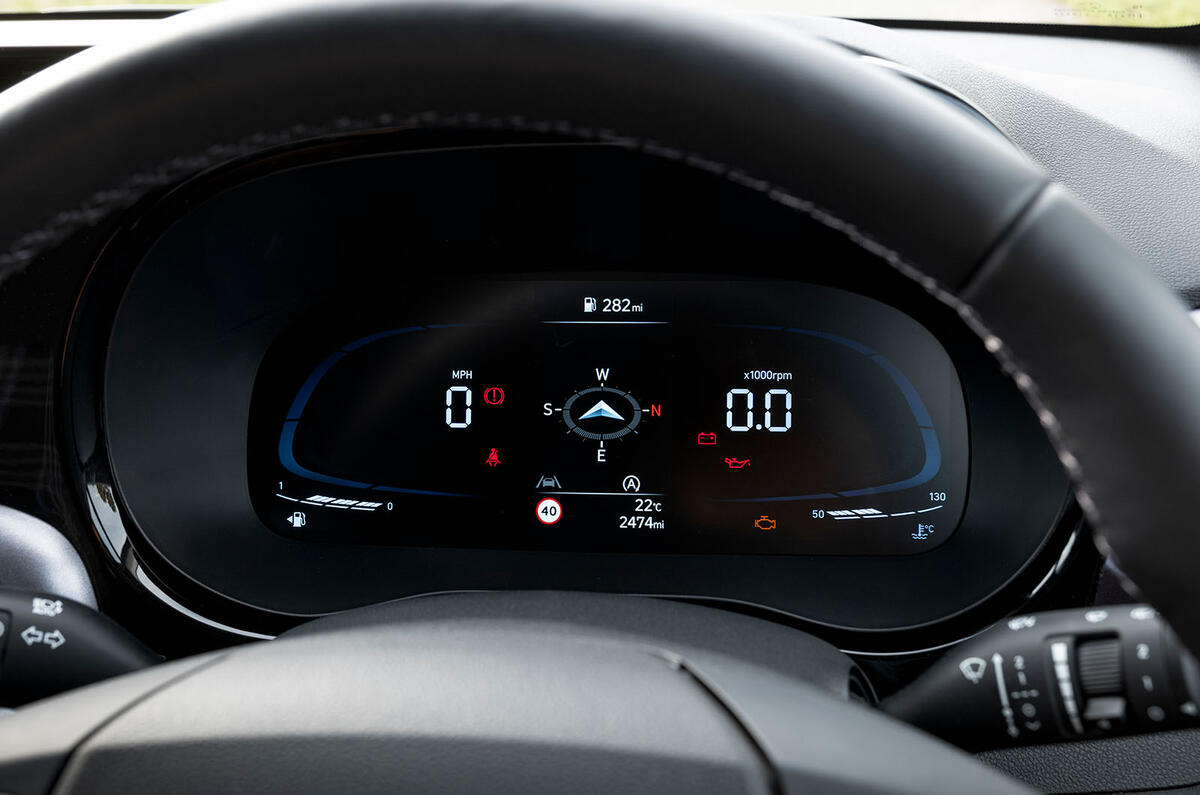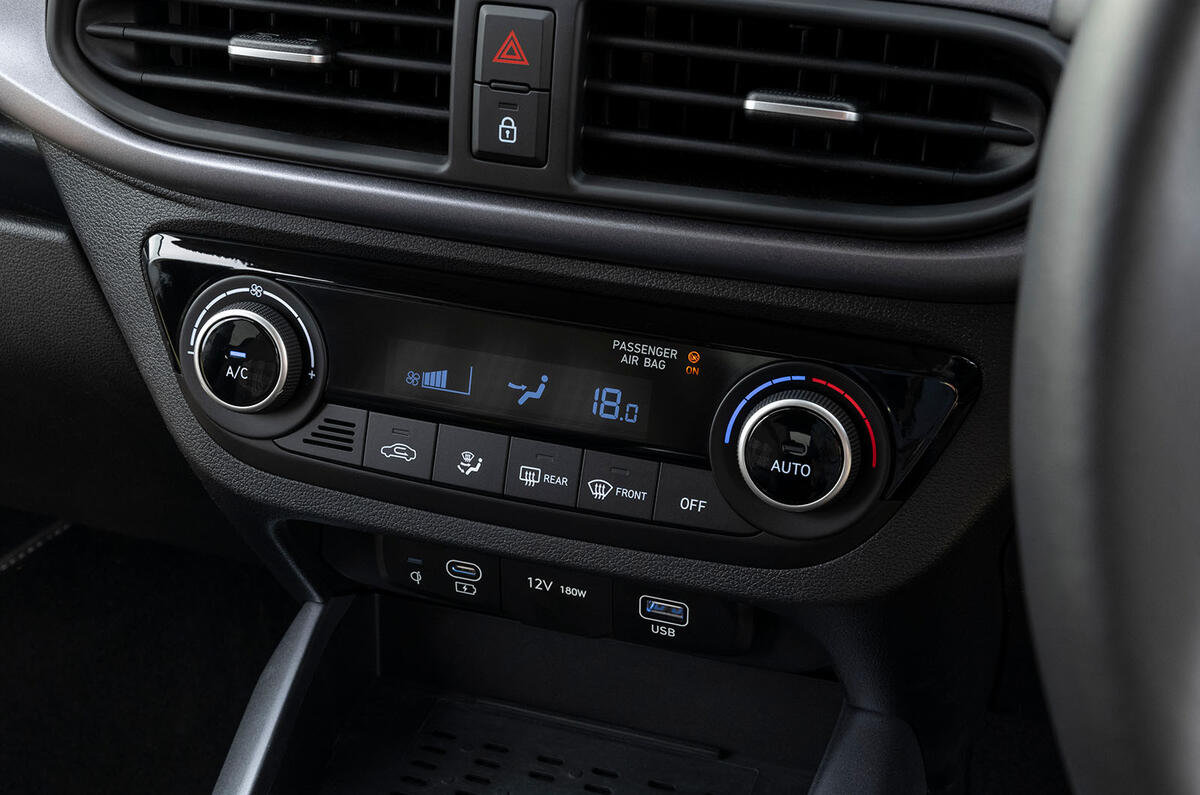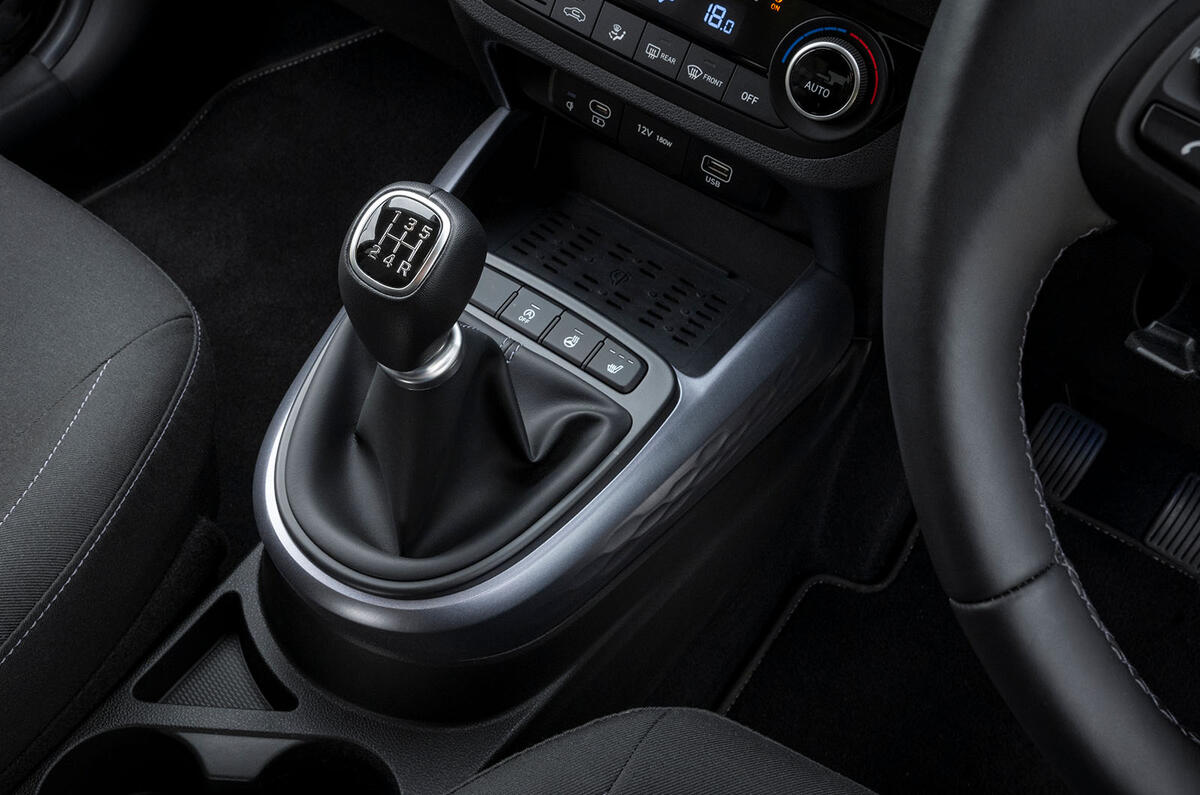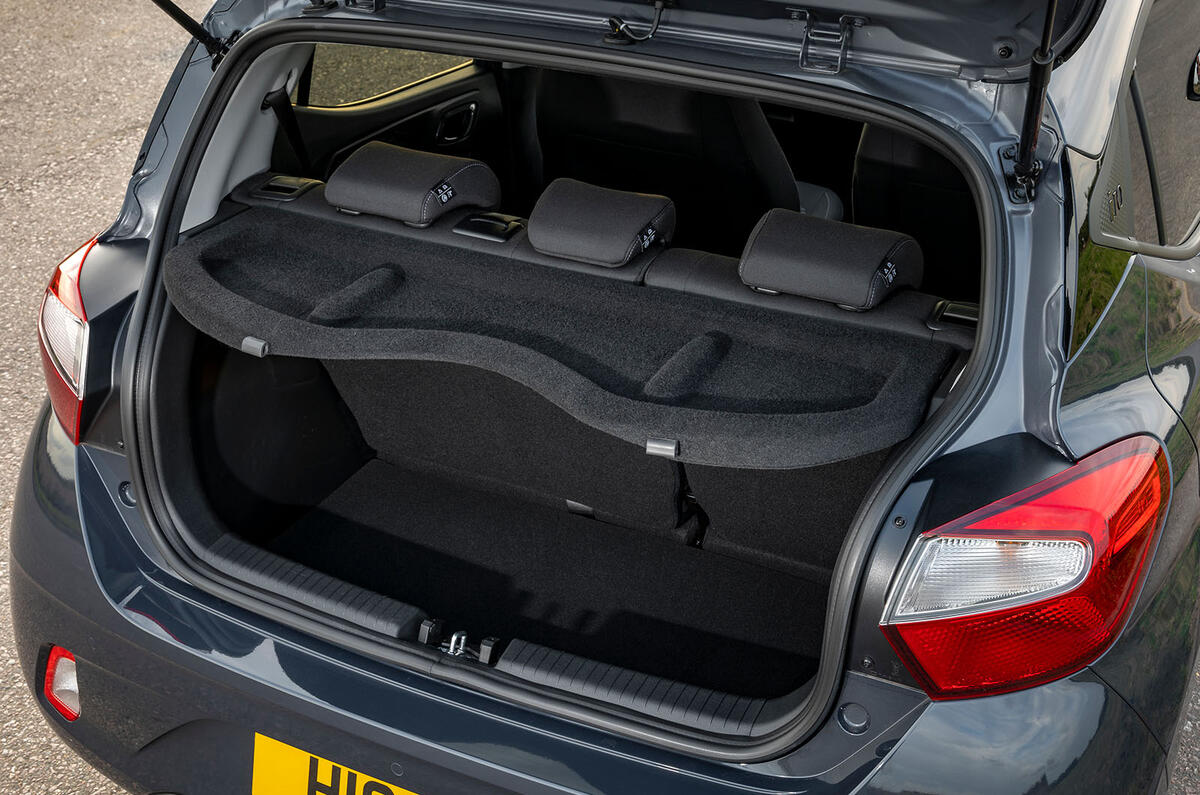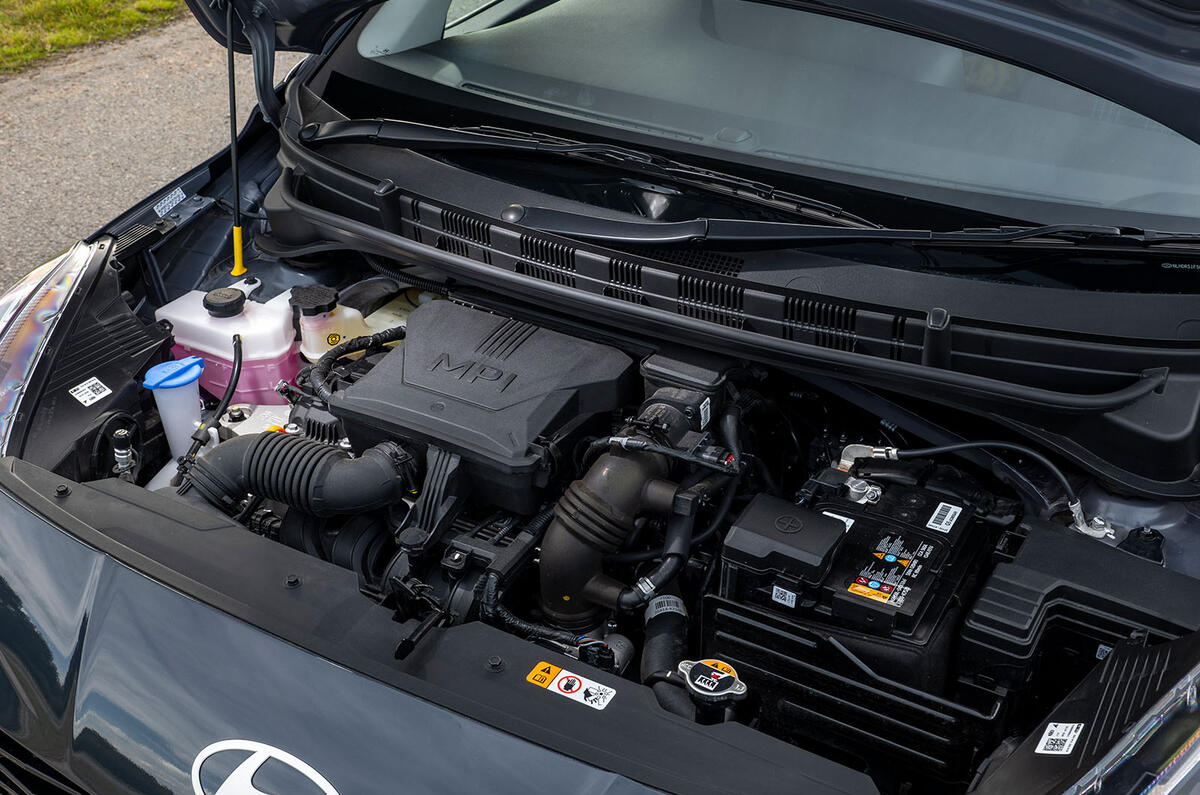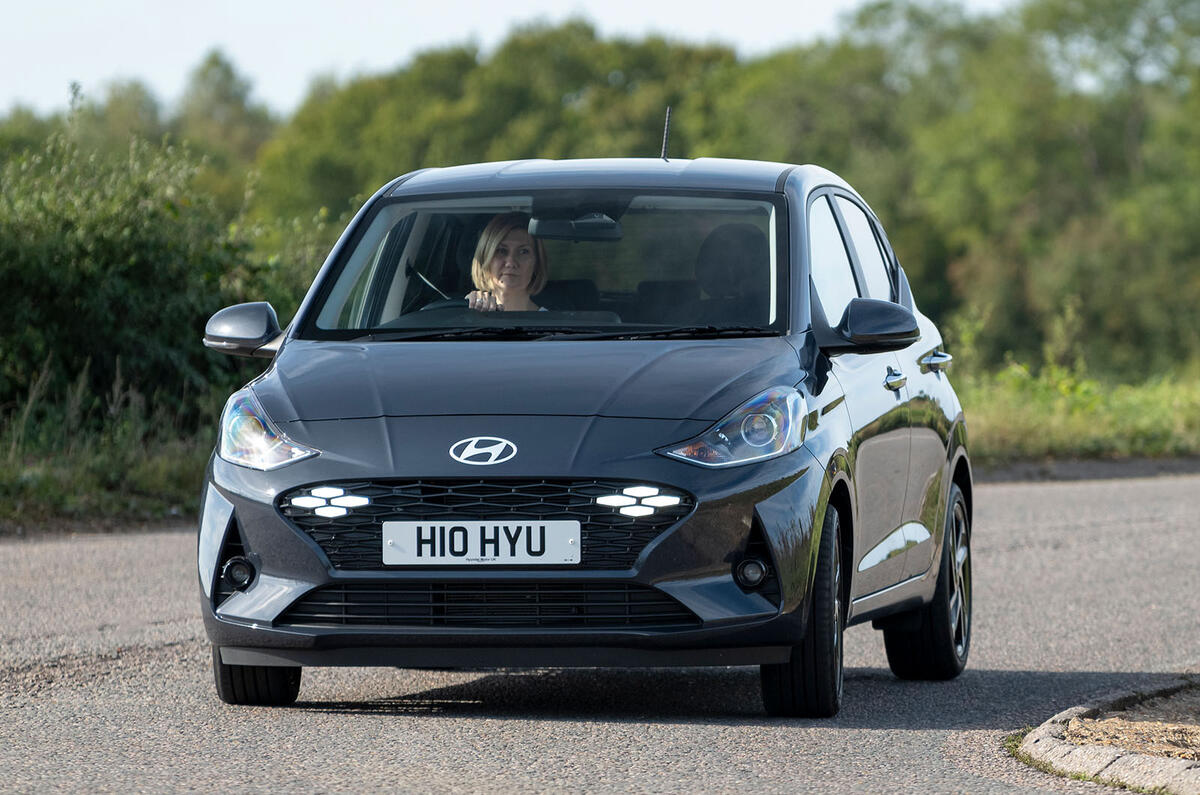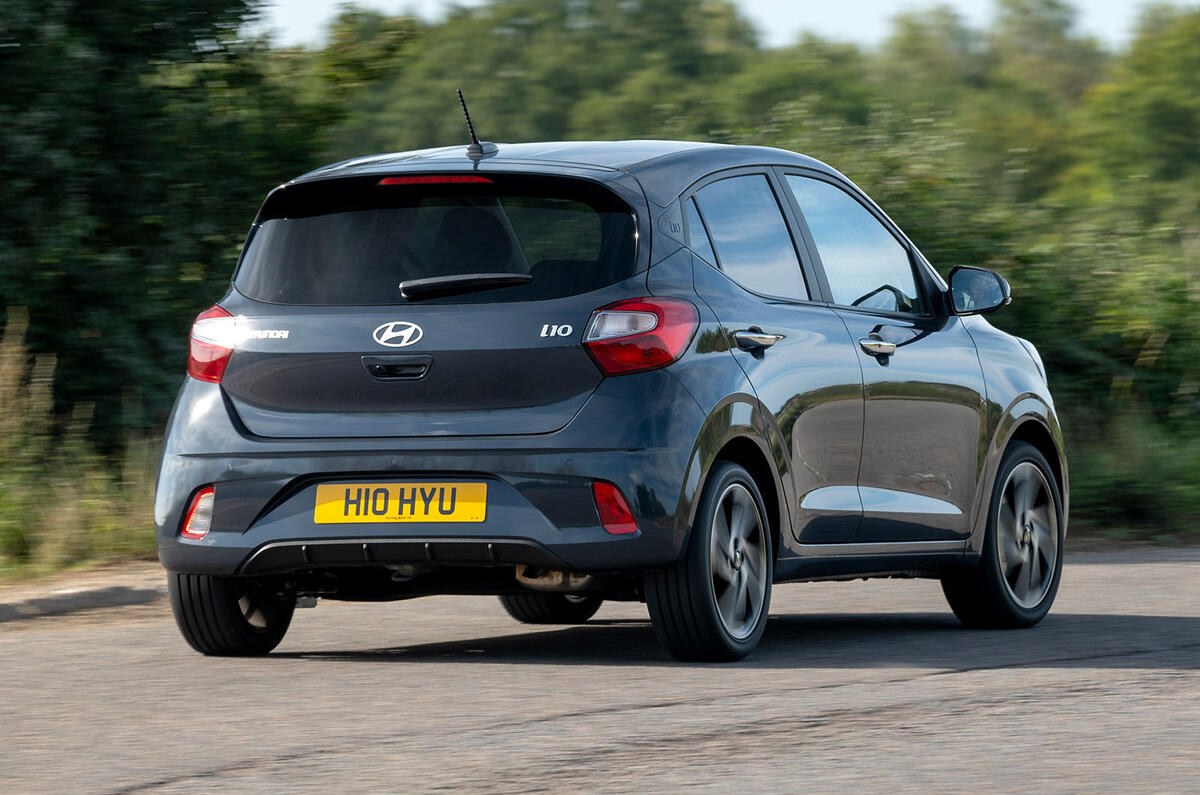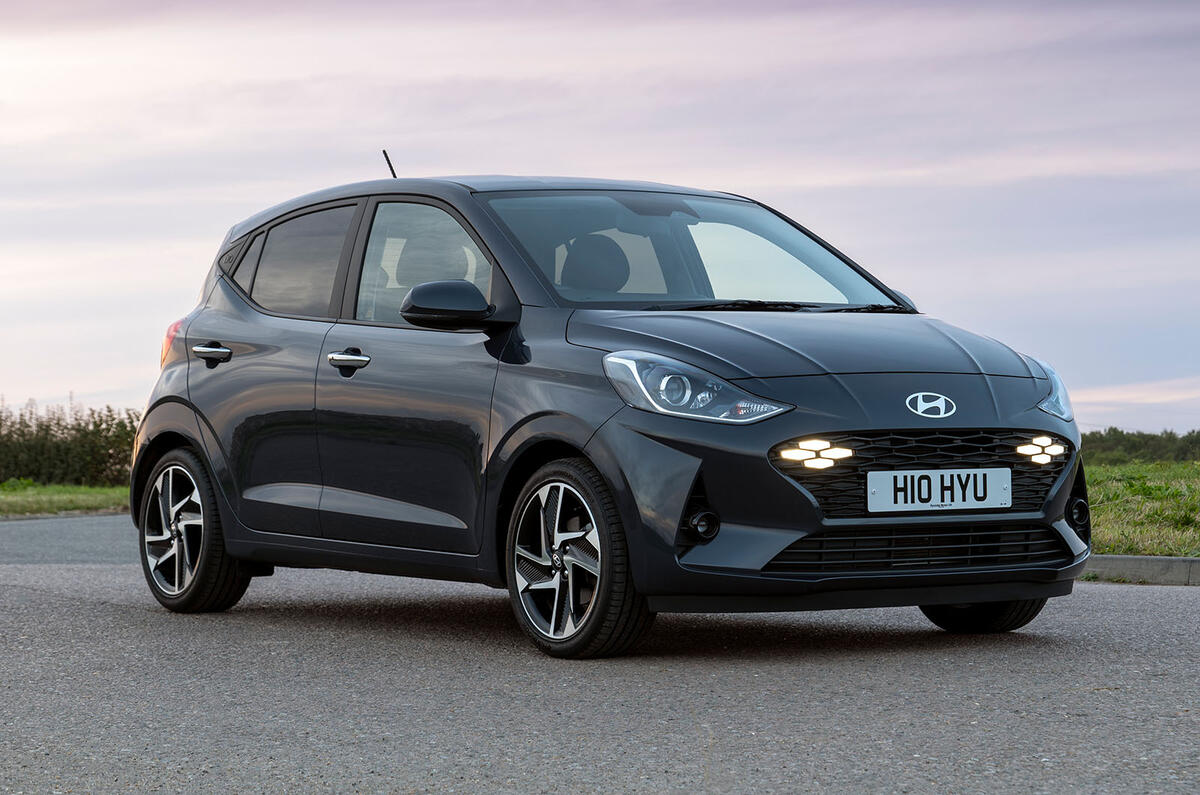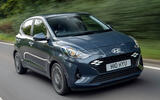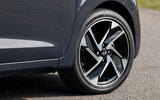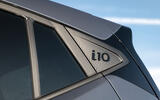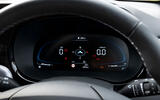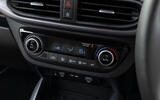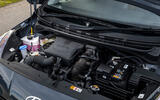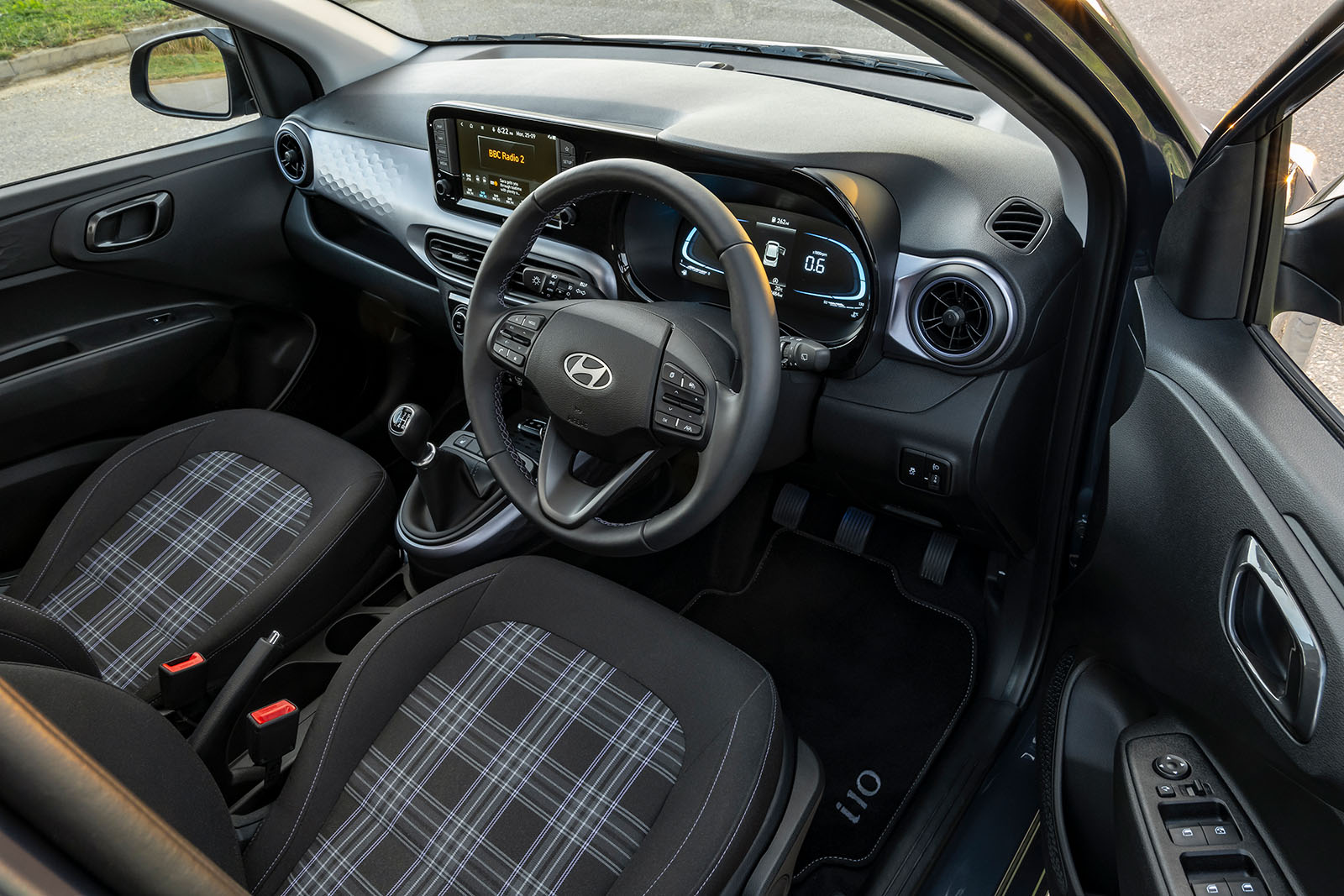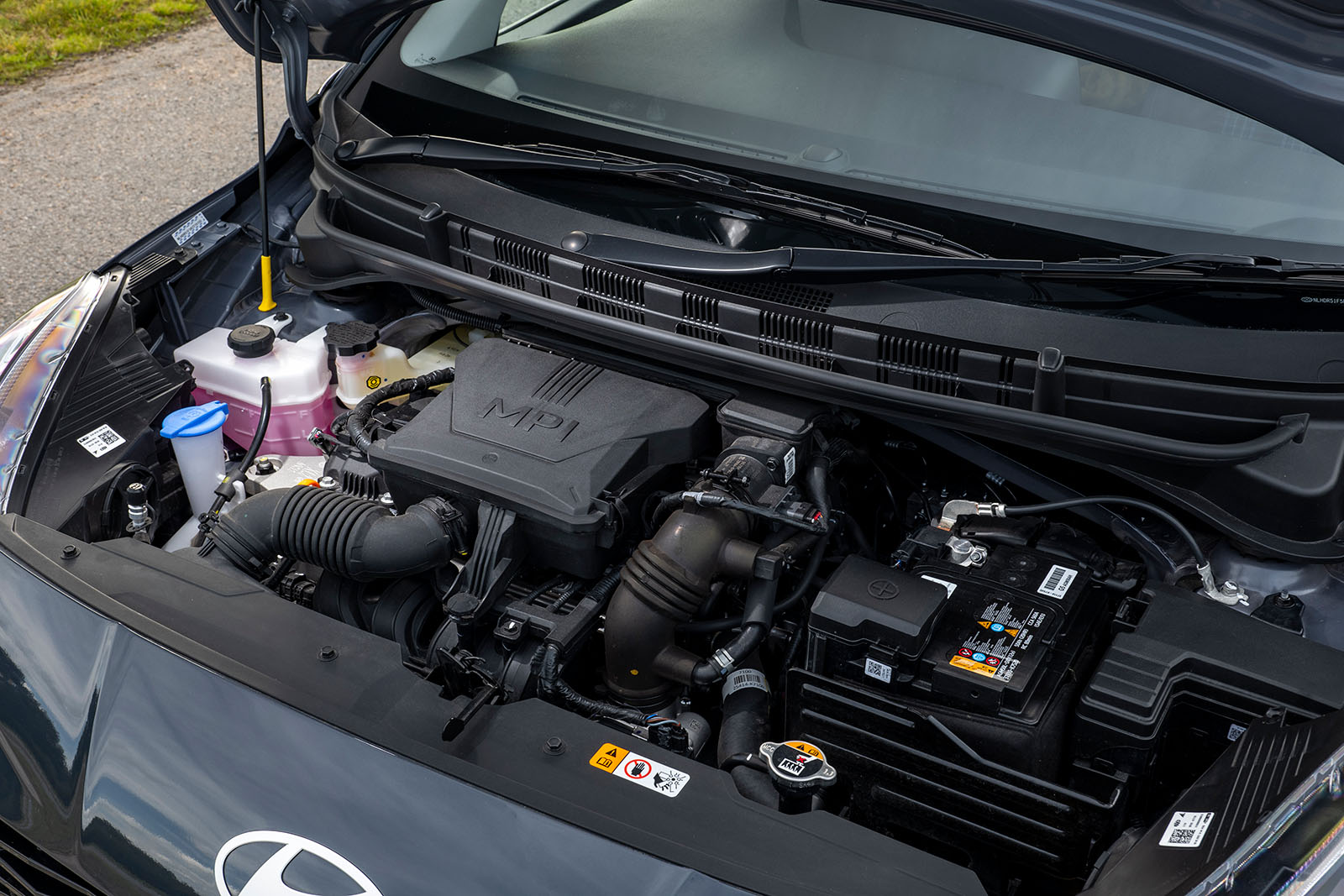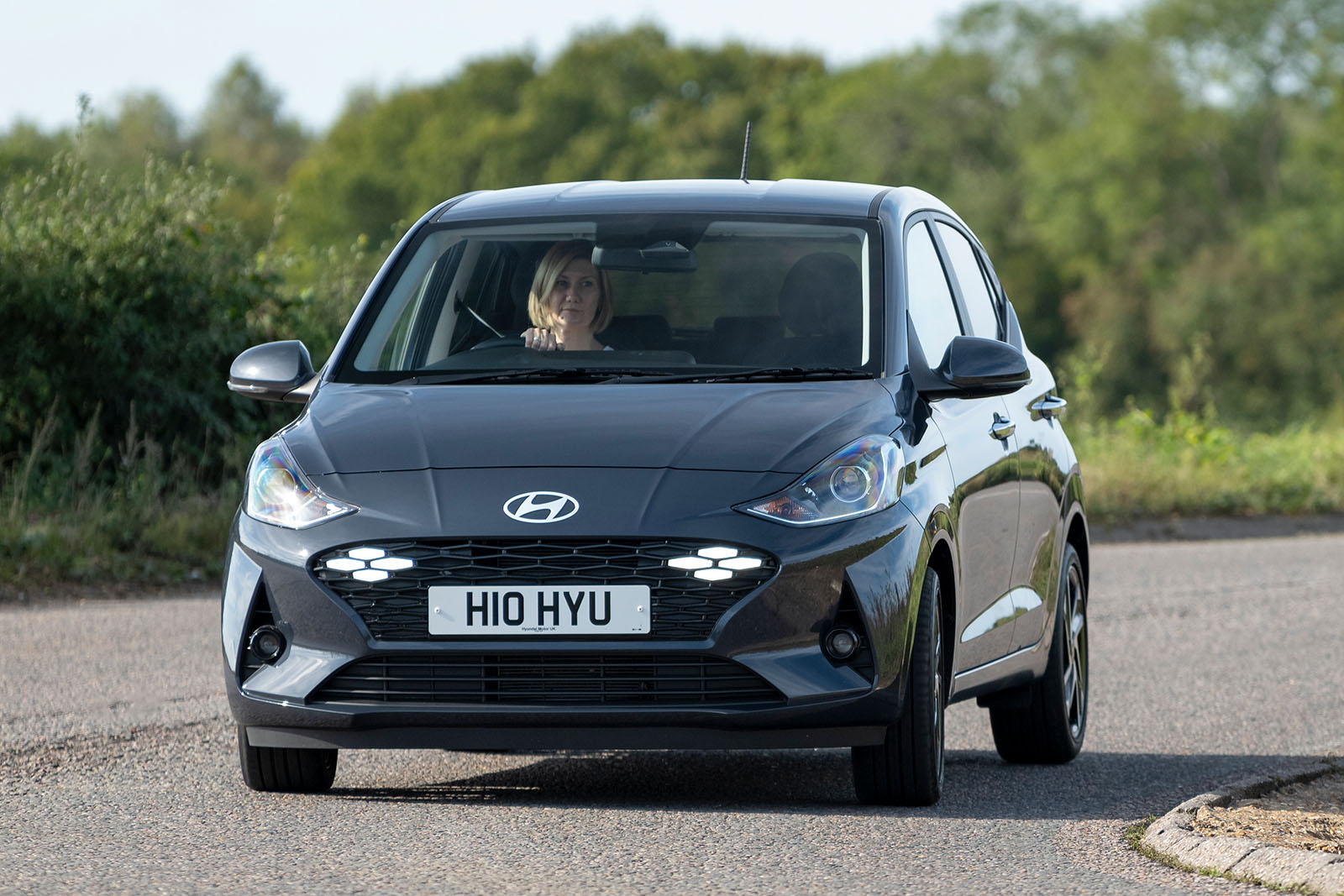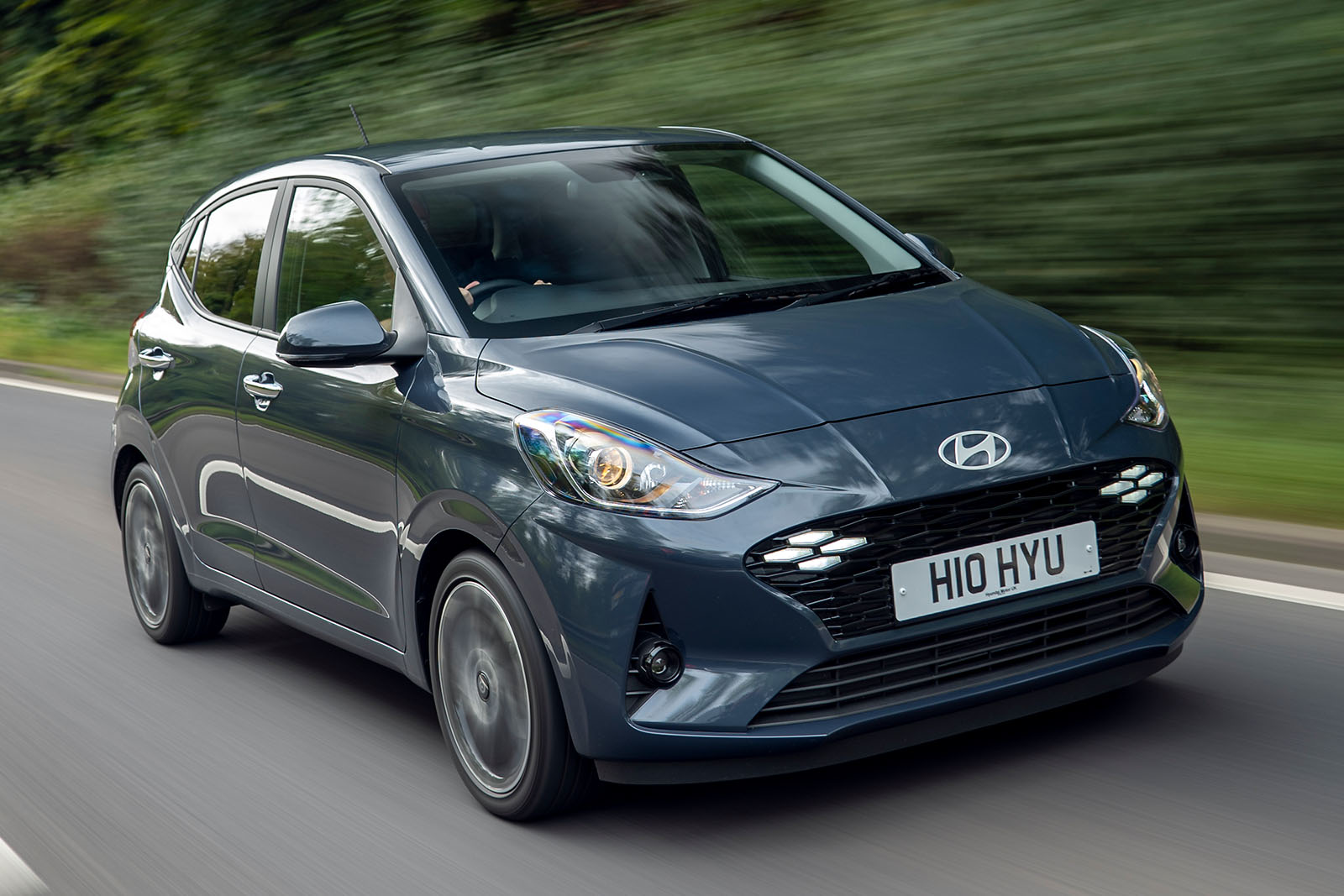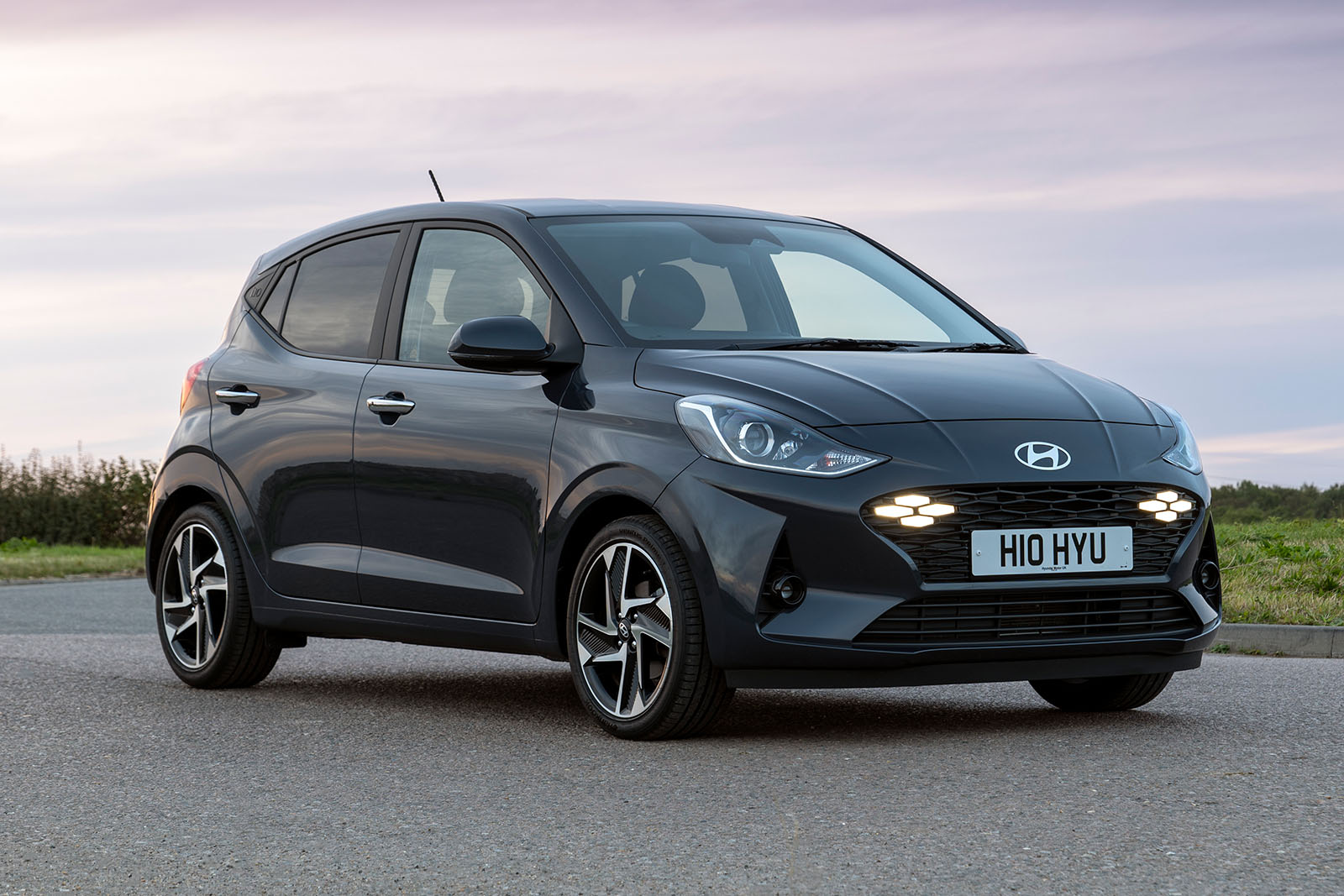We know cars like the i10 as city cars but there’s little to stop them being everyday family transport these days, such is their capability. Certainly, in the i10’s case, when it comes to accommodating people, it does it easily enough. An average-sized adult can sit behind the same with a couple of inches of both head and leg room to spare, although three people across the rear bench is a squeeze.
A decent driving position is pretty simple to achieve, with surprising space around your extremities and a seat that positions and holds you square at the controls.
The seats themselves are smaller than in bigger family cars but supportive and comfortable over longer distances and the gearlever is sited medium-high. The steering wheel adjusts for rake only, sadly, and a rotary dial to recline the seat would be better than a lever. But Hyundai has largely kept things uncomplicated and the i10 is better for it. There are big, clear rotary dials for the ventilation and similarly large buttons for driver and comfort aids.
While it is an intuitive place to sit, the interior’s visual attractiveness is lacking somewhat. It’s no worse than an MG 3, but a Toyota Aygo X or Fiat 500 are a bit bolder with their choice of shades, textures and colours. Advance cars get textured grey plastic, while Premium-trim variants get a more eye-catching honeycomb design on the door trims, dashboard and centre console - but it never quite pulls the interior up a notch. Perceived quality is about right for this price point, with lots of hard, scratchy materials, but it helps that they feel well screwed-together and the buttons and stalks are nicely damped.
The front of the cabin is practical and gets plenty of storage options, from a shelf above the glovebox to a whole host of them along the centre tunnel. The glovebox itself is also of a useful size, as are the front cupholders.
Practicality continues to the rear. If you’re looking for a car of this size, it’s a reasonable bet that you’re not prioritising boot space, but in its class, the i10’s 252 litres and 60/40 split fold rear seat are competitive.
As far as technology is concerned, there’s a USB-C port, a 12V outlet next to it and a rather outdated USB point you use to connect your phone to Apple CarPlay or Android Auto. Which brings us to the infotainment system.
It’s curious to find a large, 8.0in central touchscreen like the i10’s that has so few standard features. You can pair a phone to its Bluetooth system and play music through it, too, or it will control the radio. And you can change some settings – notably which two things sit on the home screen, plus amend the ‘star’ shortcut button to the bottom left.
That it doesn’t do too much else is fine, because you’ll own a smartphone that does navigation, contains your favourite music and can read out your messages just as well as - if not better than - many automotive systems. That being said, when you set a waypoint on the Hyundai's native sat-nav, a dotted line appears showing you the direction to your destination as the crow flies. This is presumably so you can find a better route if stuck in traffic, which is very useful.
While we're grumbling, for this generation Hyundai saw fit to omit a speedometer and rev counter for a digital display with revs measured as decimals. This makes it needlessly more difficult and less intuitive to know when to change gear, for both optimum performance and economy.



